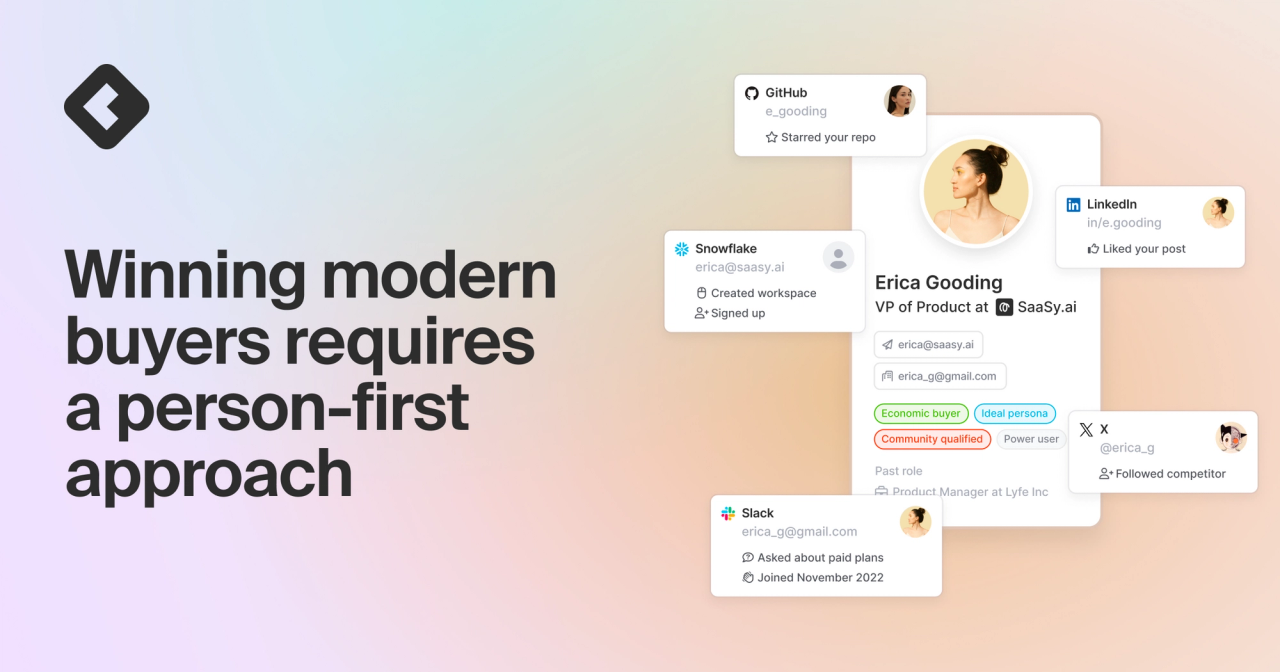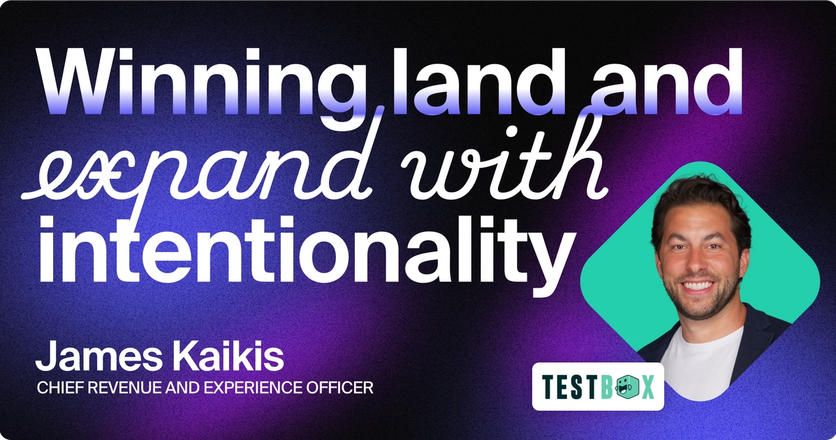A new breed of tech-savvy buyers has emerged and forever changed the way we sell B2B software.
Old personalization tricks, like name-dropping college teams or scanning Linkedin profiles for personal anecdotes to use in email copy, just don’t cut it anymore. This type of cold outbound feels disingenuous, forced, and robotic.
Today’s buyers aren’t easily swayed by irrelevant details—they require value. And they’d rather do their own research before wasting time on a demo with a rep.
In fact, according to Gartner, software buyers tend to stay anonymous for as long as possible, leaving sales reps with just 16% of the buying cycle to build relationships and influence purchase decisions.
The pitfalls of traditional personalization
So how do you know if your team is still selling in the old way? With help from sales leaders, we’ve broken down the most common pitfalls:
1. Shallow context
Relying solely on Linkedin profile facts and anonymous account-level intent data will only give sellers limited, often-superficial info. So they end up using outdated personalization tricks, like college names, company milestones (think funding or 10-Ks), and job role assumptions that miss the mark.
2. Bad timing
Blind spots in the buyer journey mean reps can’t predict when it’s the right moment to reach out. This leads to false alarms, where reps contact buyers too early when they’re just browsing or too late when competitors are already in the game.
3. One-trick ponies
Sellers lack access to compelling insights that could inform more effective communication. So they stick to a single predictable playbook that relies on job title or account intent. These broken records play on repeat and reduce your chances of booking a meeting before the dreaded break-up email.
4. Wrong communication channel
Buyers are active in multiple channels, and not knowing where they prefer to communicate (be it Linkedin, Slack, Twitter, or some other channel) leads to ineffective connection.
5. Siloed, anonymous views
Traditional intent solutions often reduce buyers to account names or anonymized IDs with almost zero context concerning their journeys. Product usage data (data warehouses) and dark-funnel data (social, community) are often locked away in hard-to-access systems or channels with siloed visibility—think sifting through Linkedin or Slack. Reps find themselves wasting time jumping from interface to interface to find purchase intent in the vast sea of digital breadcrumbs left by buyers just to uncover the person behind the intent signal.
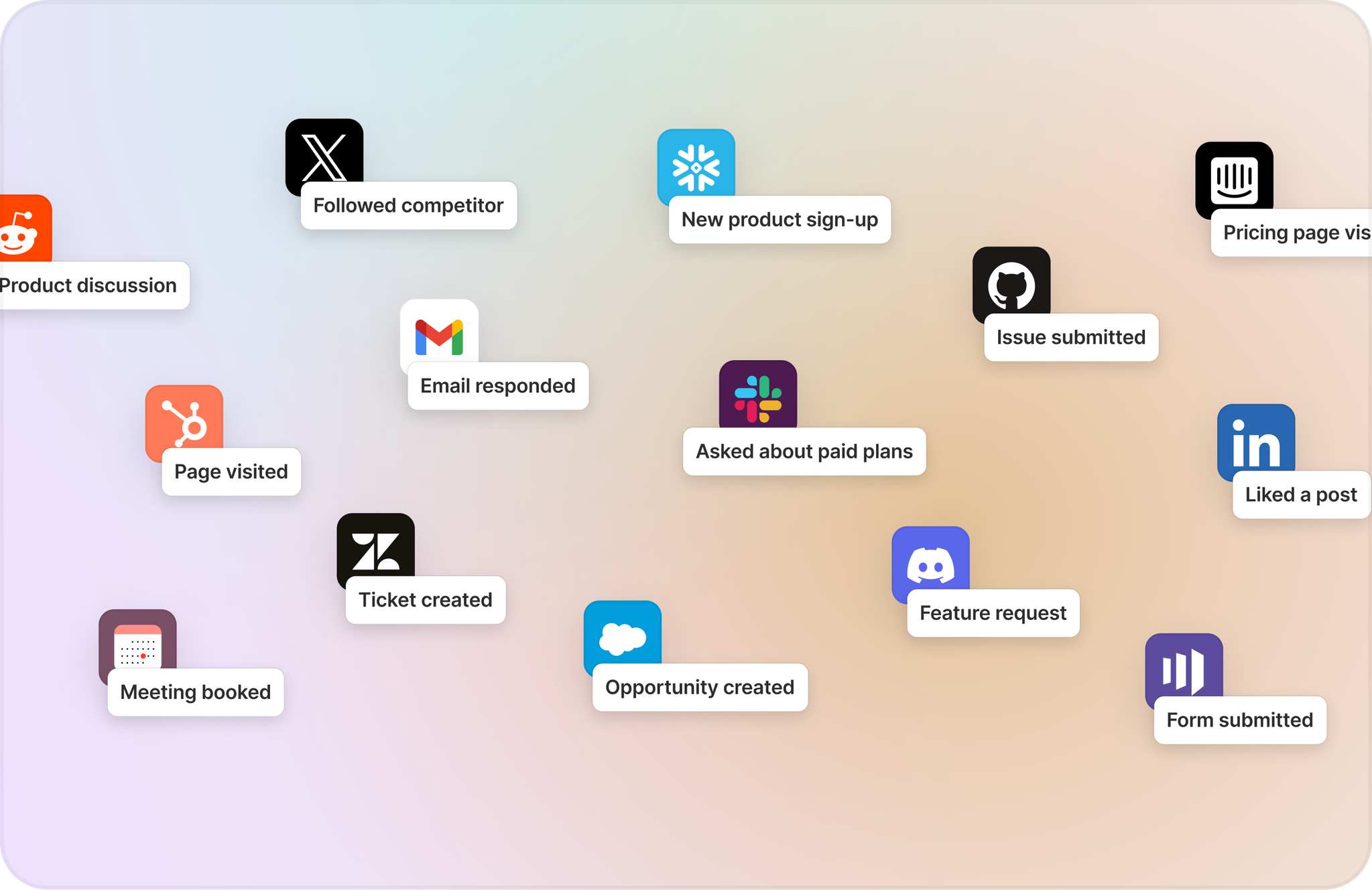
With so much customer data floating in the ether, you might wonder why sellers aren’t leveraging it for timely, relevant, and warm outreach. Well, it's not that simple.
The modern data stack is getting bigger and more complex. Dozens of solutions offer data scattered across different identities and accounts, often imperfectly matched in CRMs.
Most data isn't accessible for reps. It’s locked away in data warehouses or hidden across social and community channels. Or it's anonymized IP intent data that only reveals company names but doesn't identify the actual person. So reps over-index on the limited insights they do have, which leads to substandard results.
So how are sellers supposed to keep up in today’s dynamic buying environment?
To succeed, they need a fresh approach to selling that’s centered around the identity of the person taking the action.
They need access to deanonymized, comprehensive, and unified buyer data across every channel the buyer touches (product, social, community, and beyond) to deliver the right message at the right time to the right person.
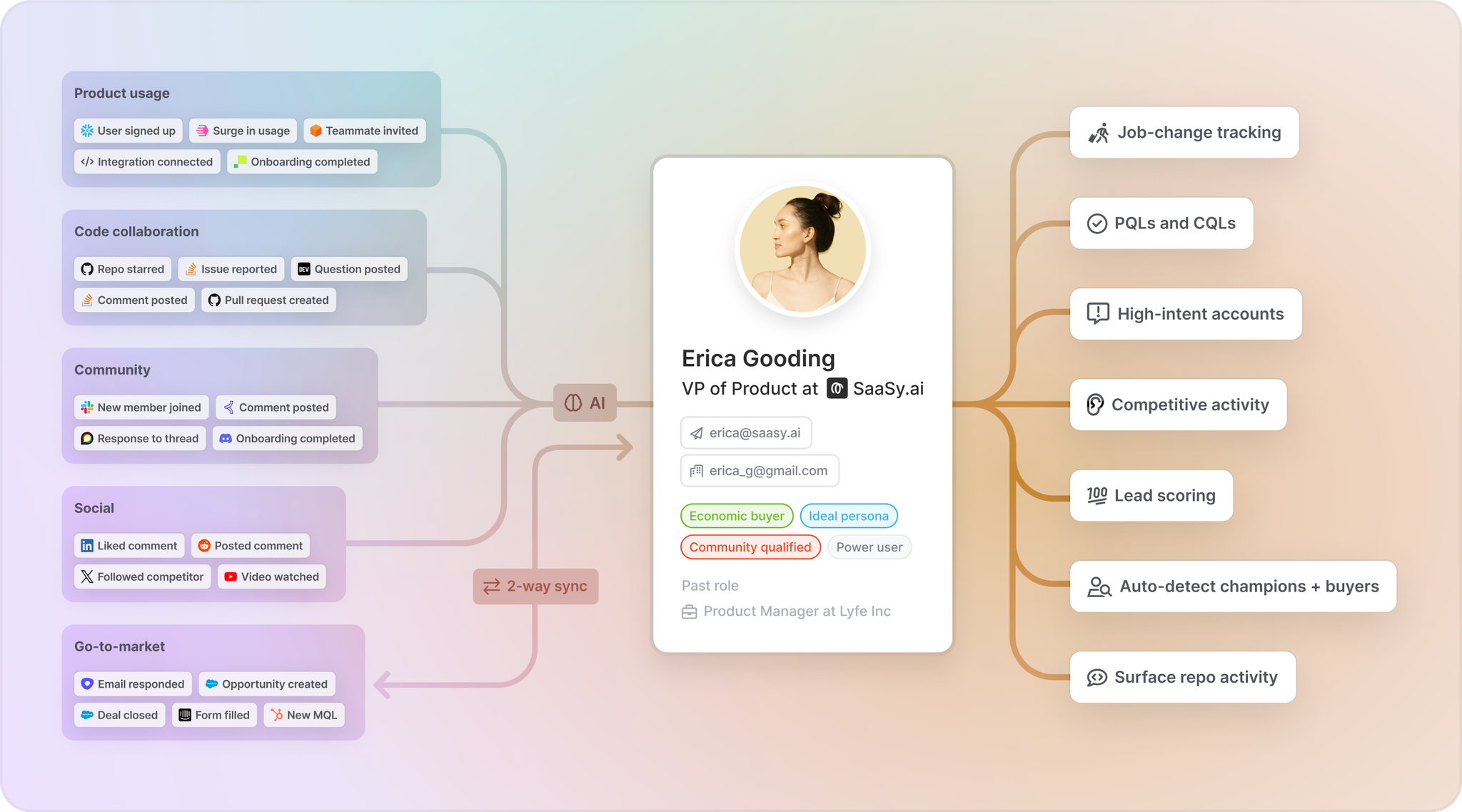
How to win over modern buyers with a person-first approach
In this new era of selling, tech-savvy buyers expect reps to have the context of their full buyer journey. They want reps to grasp their challenges and frustrations before taking a call. And they want to work with a rep who is helpful and consultative.
For sellers to thrive in the age of the modern buyer, they must:
1. Send hyper-relevant outreach
Forget generic outreach. Sellers need to show that they understand their buyers and have visibility into their movements, preferences, and pain points. A deanonymized, person-first view into context across every buyer touchpoint enables tailored messages, leading to higher-quality outreach and improved conversion rates.
2. Be timely
Relying on vague, anonymous intent with no visibility into the full buyer journey can lead to reaching out too soon or too late with the wrong tactic for the stage of the buyer’s journey. A complete view of the person and their interactions is required for reps to understand where buyers are in their journey and when to reach out.
3. Intelligently run multiple plays
One-shot personalization followed by product-only messaging isn’t enough. Buyers are complex, so multiple plays based on every buying signal offer more opportunity to strike the right chord. Sellers should leverage buyer signals and automation to run a mix of plays for higher chances of conversion, like product usage plays, social engagement plays, ICP plays, and community champion plays. Elevating strategies with AI and automation ensures reps' time is invested in winning plays.
4. Connect on the right channel
Buyers expect reps to engage with them in channels where they regularly communicate (like Linkedin, Slack, and Discord) for more efficient and effective conversations.
5. Access a holistic, person-first view
To sell efficiently and effectively, teams need a holistic view of the person behind the signal. This involves piecing together demographics, social engagement, support tickets, sentiment, product usage data, and more into a unified, deanonymized, context-rich, and person-first view without depending on RevOps or engineering.
Gartner predicts that by 2026, 65% of B2B sales organizations will transition from intuition-based selling to data-driven selling, using technology that unites workflows, data, and analytics.
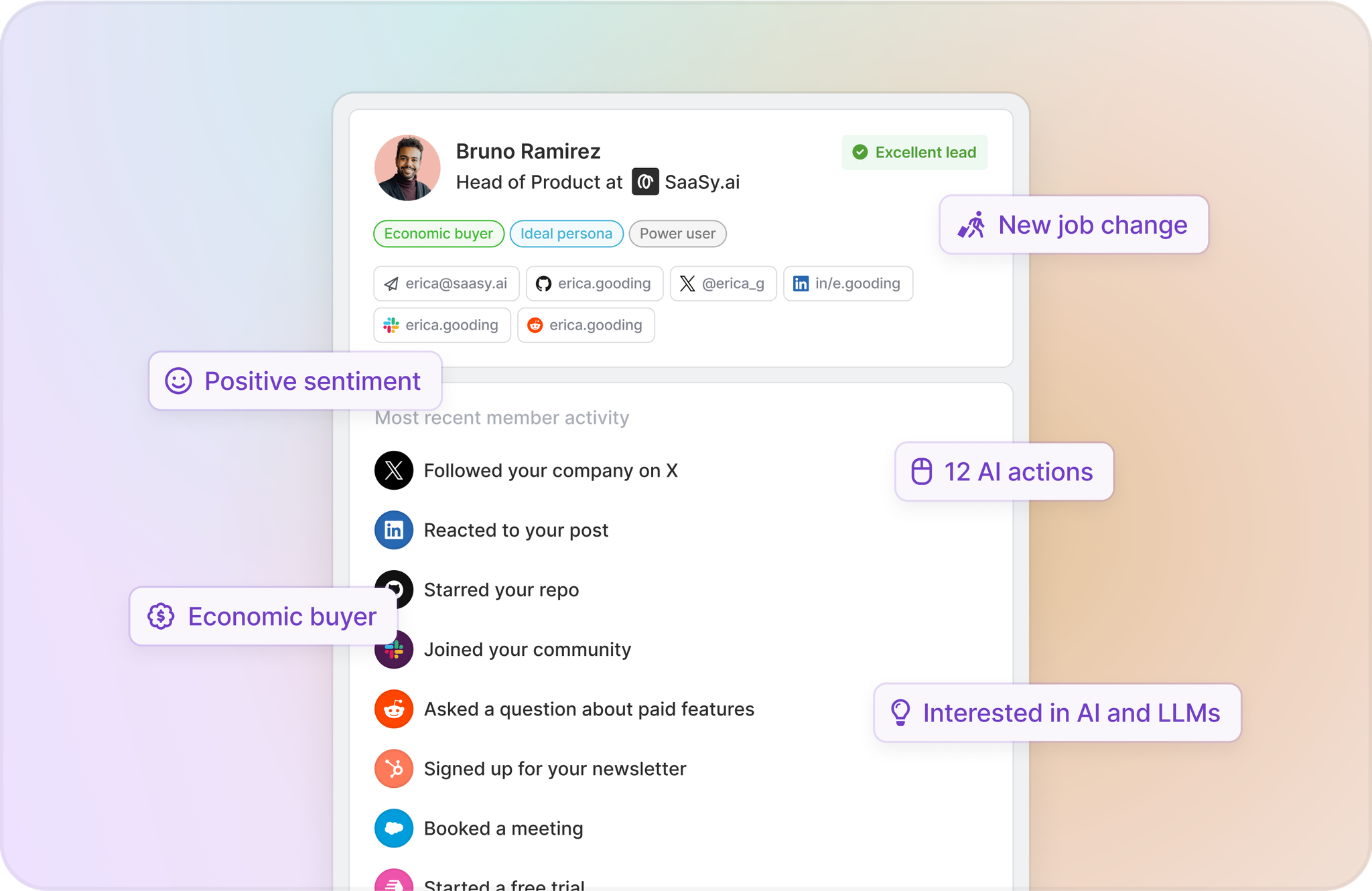
We recently launched Person360™ to help usher in this new era of selling.
Person360™ offers sellers a comprehensive, 360-degree view of all buyer activities—digital interactions, product usage, job history, demographics, firmographics, and more—all tied to one unified profile.
We automatically capture, aggregate, enrich, and deanonymize buyer signals from over 30 channels and link them to a single identity using proprietary, AI-powered identity resolution models.
Sales teams no longer have to rely on surface-level intent data or anonymous signals that may or may not be relevant to the buyer. With Person360™, sellers can effortlessly connect with the real person behind the signal—no technical help necessary.
Win over modern buyers with a person-first approach
Ready to learn more about Person360™ and how it can help you connect better with your buyers and win more business?
